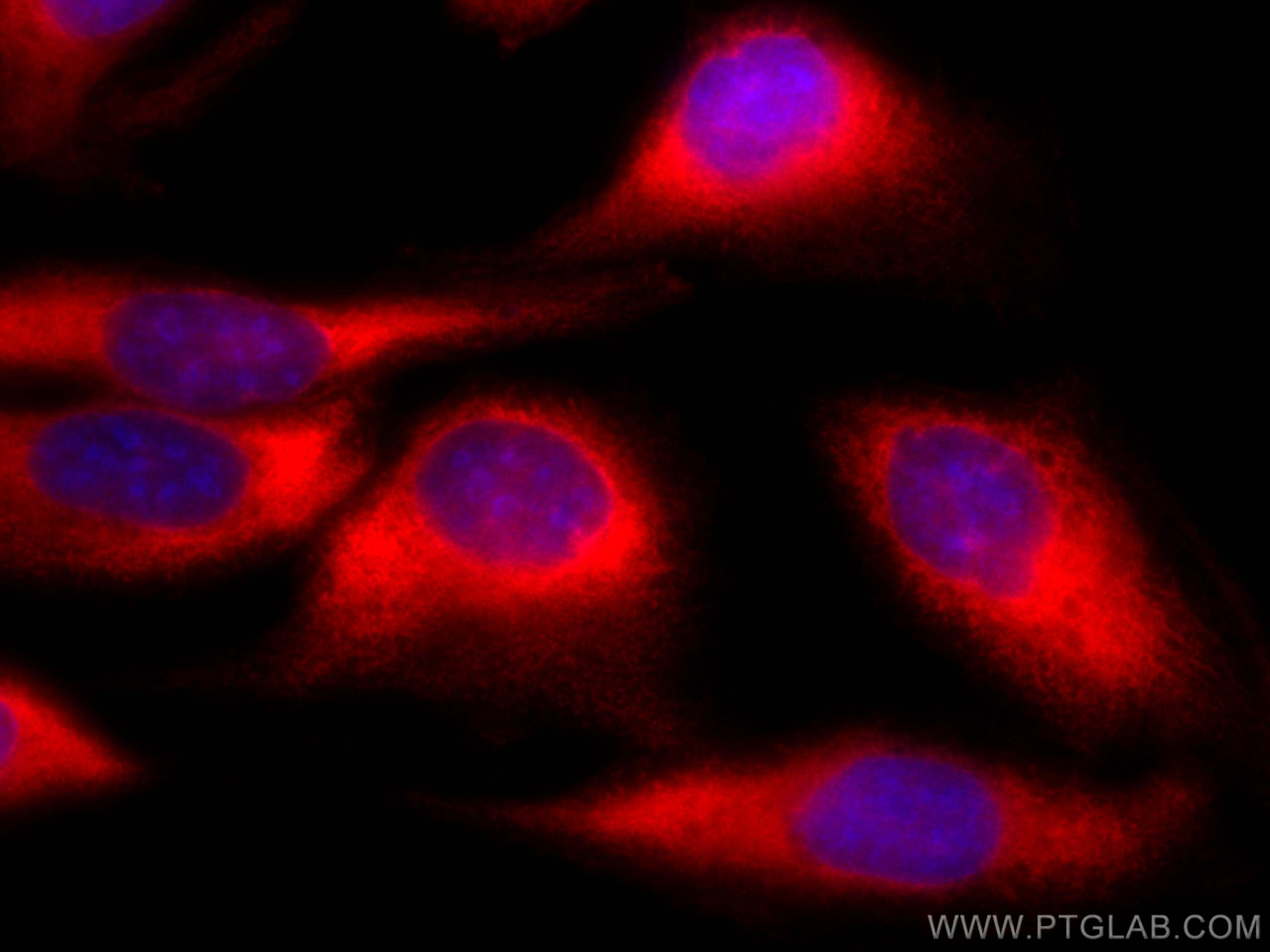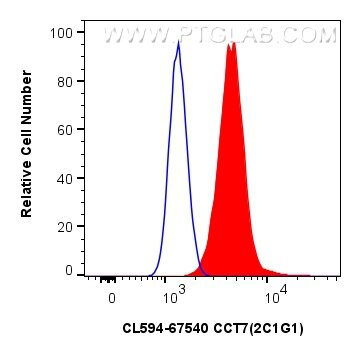Tested Applications
| Positive IF/ICC detected in | U2OS cells |
| Positive FC (Intra) detected in | U2OS cells |
Recommended dilution
| Application | Dilution |
|---|---|
| Immunofluorescence (IF)/ICC | IF/ICC : 1:50-1:500 |
| Flow Cytometry (FC) (INTRA) | FC (INTRA) : 0.40 ug per 10^6 cells in a 100 µl suspension |
| It is recommended that this reagent should be titrated in each testing system to obtain optimal results. | |
| Sample-dependent, Check data in validation data gallery. | |
Product Information
CL594-67540 targets TCP1 eta in IF/ICC, FC (Intra) applications and shows reactivity with human, mouse samples.
| Tested Reactivity | human, mouse |
| Host / Isotype | Mouse / IgG1 |
| Class | Monoclonal |
| Type | Antibody |
| Immunogen |
CatNo: Ag9502 Product name: Recombinant human CCT7 protein Source: e coli.-derived, PET28a Tag: 6*His Domain: 240-543 aa of BC019296 Sequence: LNVELELKAEKDNAEIRVHTVEDYQAIVDAEWNILYDKLEKIHHSGAKVVLSKLPIGDVATQYFADRDMFCAGRVPEEDLKRTMMACGGSIQTSVNALSADVLGRCQVFEETQIGGERYNFFTGCPKAKTCTFILRGGAEQFMEETERSLHDAIMIVRRAIKNDSVVAGGGAIEMELSKYLRDYSRTIPGKQQLLIGAYAKALEIIPRQLCDNAGFDATNILNKLRARHAQGGTWYGVDINNEDIADNFEAFVWEPAMVRINALTAASEAACLIVSVDETIKNPRSTVDAPTAAGRGRGRGRPH Predict reactive species |
| Full Name | chaperonin containing TCP1, subunit 7 (eta) |
| Calculated Molecular Weight | 543 aa, 59 kDa |
| Observed Molecular Weight | 59 kDa |
| GenBank Accession Number | BC019296 |
| Gene Symbol | CCT7 |
| Gene ID (NCBI) | 10574 |
| RRID | AB_2934773 |
| Conjugate | CoraLite®594 Fluorescent Dye |
| Excitation/Emission Maxima Wavelengths | 588 nm / 604 nm |
| Form | Liquid |
| Purification Method | Protein G purification |
| UNIPROT ID | Q99832 |
| Storage Buffer | PBS with 50% glycerol, 0.05% Proclin300, 0.5% BSA, pH 7.3. |
| Storage Conditions | Store at -20°C. Avoid exposure to light. Stable for one year after shipment. Aliquoting is unnecessary for -20oC storage. |
Background Information
CCT7 is a subunit of CCT complex-a large cytosolic chaperonin complex composed of two hetero-oligomeric stacked rings able to interact with nascent polypeptides, which mediates protein folding in an ATP-dependent manner and prevents aggregation in eukaryotes. Each ring consists of eight different subunits (CCT1 to CCT8). CCT7 is involved in preventing aggregation of GPCRs and in regulating their expression, maturation, and transport to the cell surface.
Protocols
| Product Specific Protocols | |
|---|---|
| FC protocol for CL594 TCP1 eta antibody CL594-67540 | Download protocol |
| IF protocol for CL594 TCP1 eta antibody CL594-67540 | Download protocol |
| Standard Protocols | |
|---|---|
| Click here to view our Standard Protocols |






